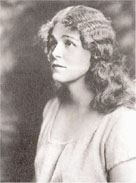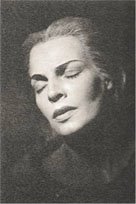Up close and personal
Pelléas et Mélisande I'm somewhat surprised to find that last evening was the Met's 107th Pelléas, considering that the previous evening had the 250th performance of Turandot, a far more popular work than the ratio might imply. Debussy, who wrote to his friend Ernest Chausson "Music really ought to have been a hermetical science, enshrined in texts so difficult and laborious as to discourage the herd of people who treat it as casually as they do a hankerchief!", must be turning in his grave.
I'm somewhat surprised to find that last evening was the Met's 107th Pelléas, considering that the previous evening had the 250th performance of Turandot, a far more popular work than the ratio might imply. Debussy, who wrote to his friend Ernest Chausson "Music really ought to have been a hermetical science, enshrined in texts so difficult and laborious as to discourage the herd of people who treat it as casually as they do a hankerchief!", must be turning in his grave.
The No. 107 is also my No. 1; I'm nearly certain there'd be a No. 2, and if I live long enough a No. 20. At my slow rate of absorption, I would probably need more than 20 to claim this Debussy. Sitting at the orchestra section, eight rows away from the pit, added to my uneasiness. I consider it a necessary part of the experience to watch the maestro and his players at the pit dance and undulate with the score. This element is absent from row H ground floor; it was a foreign thing. The music seemed to emanate from the ground and walls; Debussy's translucence highlighted the eerieness. From my seat, the Met's proscenium was gigantic, the chandeliers appeared so far away.
The sound that arrives at row H orchestra is half-blended, the fringes nearly raw. From this pricey vantage point, it's impossible to judge vocal size (a blood sport I happen to enjoy) and (paradoxically) hard to savor dynamic extremes, including titillating floated pp's and fortes that seem to reach out for you, perched up just beneath the crusted ceiling. This is among the few cases when I can honestly revel in my poverty without shadow of envy, as rich folks hear an entirely different performance that may not be as preferrable. I doubt critics of major print sit at the bleachers for their reviews, but I hope during their off time they come and sit incognito among the middle class. Singers have to work hard to affect the bleacher-creatures, but when they succeed, they are rewarded by tumult and pandemonium. Sitting at ground level, I realized that much of the ovation comes from above. (Ecstatic Leontyne Price looked up to the heavens whenever she took her bows; perhaps she knew who sat where.)
Of course, all this is about: (1) catching only one performance of a run (who goes to only one??-- as soon as I can spend freely, it will be one evening at front row orchestra, another at front row grand tier, a couple in the side boxes, and one in the balcony; I bet the Rodelinda must have been a lush chocolate treat close-up) and (2) placing the aural experience before the spectacle of the spectacle. I think this particular production is best viewed at ground level; this is the trade-off. Jonathan Miller's staging embodies effectively the brooding placelessness of Debussy's work, and having no view of the stage turntable pulls you closer to the intended effect. It was mesmerizing to see Miller's high walls float through the orchestral interludes and the characters, their servants, and all their shadows glide from scene to scene.
Lastly, I find it difficult to discuss the singing (a true first for me); they all seem to just recede in Debussy's background.



